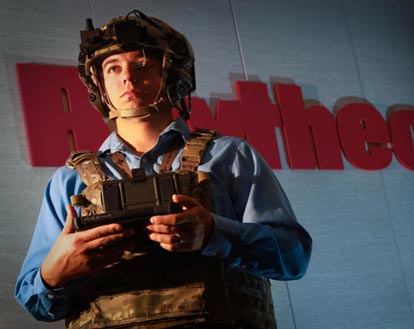The Department of Defense hopes soldiers and airmen will have an advantage in combat with new technology that is integrated into lightweight and wearable equipment. The Pentagon has invested millions of dollars to increase the power of the technology and to make this wearable technology smaller and lighter, so it is easier for troops to carry.
“We’re really trying to augment the operator and aid them throughout their many duties and responsibilities that they conduct in combat and humanitarian assistance. Anything we can alleviate and reduce the cognitive and physical needs on our airmen is very much of interest to the Air Force,” Gregory M. Burnett, chief engineer at the Battlefield Air Targeting Man-Aided Knowledge, said.
An example of this wearable technology are helmet mounted displays, which allow airmen on the ground to see where aircrafts are flying and give them other views from airborne cameras.
“The helmet mounted display lets a wearer see augmented reality, or data such as distance, location of targets and other information displayed over the location a person is looking at while audio amplifies real world sounds much like a stereo system. Really, what we’re trying to do is paint a picture in the battlefield,” Brian P. Murphy, a company intelligence information and services program manager, said.
Another example is the Warrior Web, which is a suit soldiers wear under their gear to make it easier for them carry 100 or more pounds in rough terrain, thus reducing injuries and fatigue. According to engineers, the goal of the suit is to assist soldiers without becoming a distraction.
Researchers are also working on developing a technology that can be worn in the waist area that can recharge electronic devices while the soldiers are walking.
The Defense Department will work with contractors to create new wearable technology and to test how secure and rugged the technologies are before they are incorporated into the battlefields.





